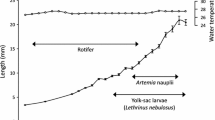Abstract.
The salmon louse, Lepeophtheirus salmonis, is a marine ectoparasitic copepod that infects salmonid fishes. We are studying the interactions between this parasite and its salmonid hosts, as it is a common cause of disease in both wild and farmed stocks of salmon. In this paper, we report on the cloning and sequencing of seven trypsin-like enzymes from a cDNA library prepared from whole body preadult female and male L. salmonis. The predicted trypsin activation peptides are 23 or 24 residues in length, considerably longer than previously reported activation peptides of other animals. Differences in the putative signal and activation peptide sequences of the trypsin isoforms suggest that these forms differ in their regulation and function. The calculated molecular weights of the trypsins range from 23.6 to 23.7 kDa. There are eight cysteine residues, which suggest the presence of four disulfide bridges. These trypsins are very similar (≥46% aa identity) to other crustacean trypsins and insect hypodermins. Using in situ hybridization techniques trypsinogen expression could be identified in all three cell types of the midgut.
Similar content being viewed by others
Author information
Authors and Affiliations
Additional information
Electronic Publication
Rights and permissions
About this article
Cite this article
Johnson, .S., Ewart, .K., Osborne, .J. et al. Molecular cloning of trypsin cDNAs and trypsin gene expression in the salmon louse Lepeophtheirus salmonis (Copepoda: Caligidae). Parasitol Res 88, 789–796 (2002). https://doi.org/10.1007/s00436-002-0656-x
Received:
Accepted:
Issue Date:
DOI: https://doi.org/10.1007/s00436-002-0656-x




